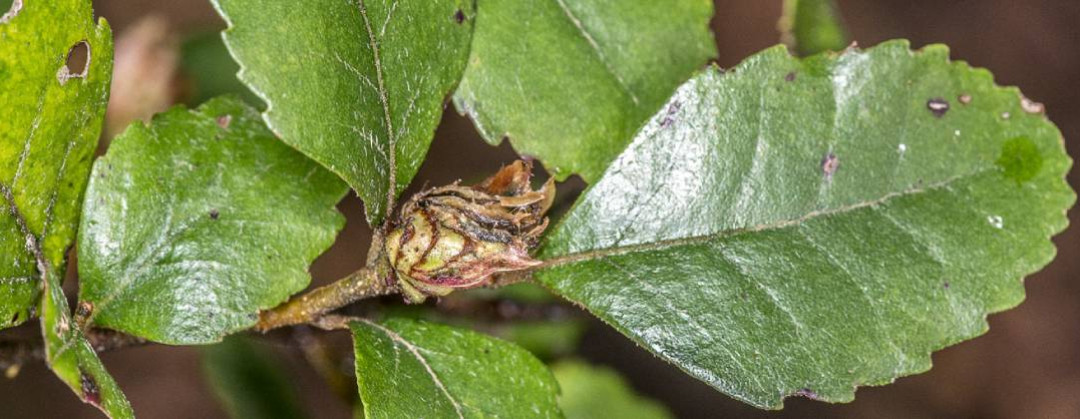Nothofagus truncate, hutu, hututawai.
Fuscospora truncate Hard beech / Tawhairaunui

This guide is based on a literature review. It compiles information from various sources. Different sources may offer varying advice and findings.
Poor seed viability and germination rates. Stores well.
Hard.
Commonly found in the north-western parts of the South Island. Found scattered in the North Island.(1)
Seeds can be stored for up to 8 years in airtight containers at 5–10 °C with a 6% moisture content.(4)
Cool-moist stratification for 2–3 months(5) (stratification is the process of chilling seeds to promote germination).
14–25% of seeds are viable.(6)
Poor germination of seeds reported across provenances.(7)
Seed viability and vegetative propagation needs further investigation.
Information about the native seed profiles
All species names are in the following order: scientific name, common name, and Māori name. Names may vary by region. We have tried to use the most common names across New Zealand.
We have sourced photos from different websites and creators. We have used the images under different licences. These include Public Domain and Creative Commons licenses. For Fuscospora truncate, the image details are:
- Photo by (c) Jeremy Rolfe – some rights reserved (CC BY)
- Original image
The basis for each seed profile is a literature review carried out by Scion. Te Uru Rākau – New Zealand Forest Service commissioned and worked on the review to produce a native seed catalogue. The full seed catalogue is on the Ministry for Primary Industries (MPI) website.
Haase, P (1990) Nothofagus truncata (Hard beech) in the upper Taramakau catchment, South Island, New Zealand. New Zealand Journal of Ecology 14, 31–35.
Entrican, A R; Hinds, H V; Reid, J S (1957) Forest trees and timbers of New Zealand. New Zealand Forest Service Bulletin No. 12. R. E. Owen, Government Printer; Wellington, New Zealand
Monks, A; Kelly, D (2006) Testing the resource-matching hypothesis in the mast seedling tree Nothogagus truncata (Fagaceae). Austral Ecology 31, 366–375.
Smale M; Bergin D; Steward G (2012) The New Zealand Beeches: establishment, growth, and management. New Zealand Indigenous Tree Bulletin No.6. New Zealand Forest Research Institute Limited. Rotorua, New Zealand.
Metcalf, L J (1995) The propagation of New Zealand native plants. Godwit; Auckland, New Zealand.
Ledgard, N J; Cath, P W (1983) Seed of New Zealand Nothofagus species: Studies of seed weight, viability, shape, and the effect of varying stratification periods. New Zealand Journal of Forestry 28(2), 150–162.
Wilcox, M D; Ledgard, N J (1983) Provenance variation in the New Zealand species of Nothofagus. New Zealand Journal of Ecology 6, 19–31.